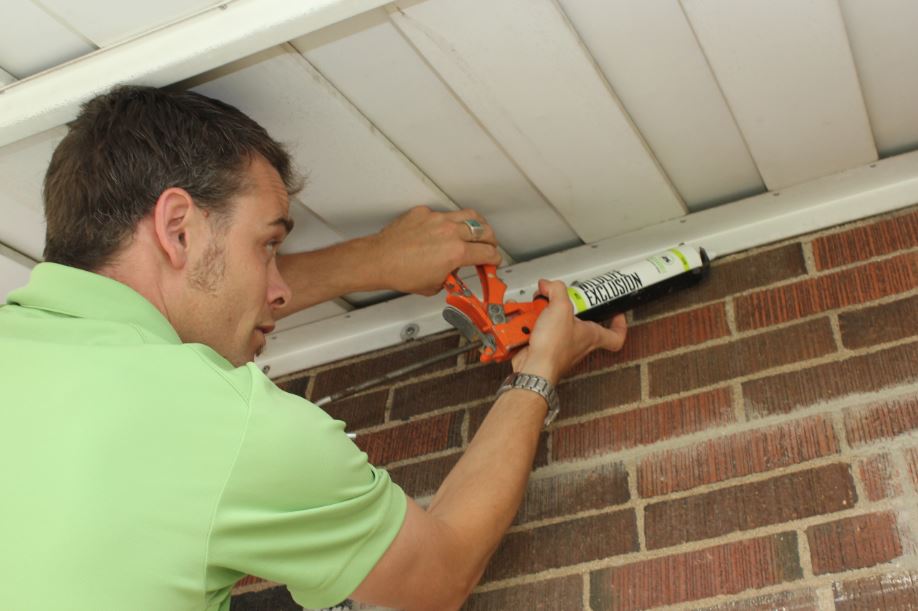When wild animals decide to move into your Milwaukee home with you to avoid cold weather and predators, it can be difficult to remove them on your own. While bats are common in the city and usually reside in hollow trees, abandoned buildings, and caves, they can become especially troublesome when they decide to roost in your home or business because they may bite and scratch people and pets when cornered or handled.
Our highly skilled and trained Skedaddle technicians can assist you with bat removal and prevention, as well as provide you with some important facts about bats, their lifestyle, and what kind of problems you might encounter once you discover one or more bats have moved into your home or business.
Urban Bats Vs. Bats in the Wilderness
While studying flying foxes (large fruit bats) in Australia, Cecilia Sánchez found that urban environments with toxic contaminants have an effect on the local bat population. Higher levels of metal in the bats’ fur correlated with higher levels of ectoparasites. This means that, when compared to bats in the wilderness, bats existing in densely human-populated areas are more likely to be dangerous to those humans. The toxins on their own are not the source of danger, but the elevation in infection rates can wreak havoc if you aren’t careful.
The study, published in 2020 will have significant impacts on wildlife management. Although the contamination leads to a decline in bat population, it also isolates the strains of viruses that those bats are exposed to, amplifying the effects. In particular, those living in big cities have to pay closer attention to how they handle a rogue bat in their attic. Safe bat removal takes more than waving a broom and screaming frantically. In fact, it is dangerous to try to remove a bat from your home on your own.
Dangers of Urban Bat Removal in Milwaukee
While bats don’t actually want to suck your blood or fly in your hair, they do pose threats in the form of contagious viruses. However, bats also serve an important role in the ecosystem, so it’s not advisable to harm them — but it’s also not advisable to try to scoot them out of your home with a frying pan.
Potential dangers of coming into contact with bats in your home include lung disease, rabies, and other infectious diseases. Bats are not naturally aggressive toward humans, so the chances of a bite are much lower than the other dangers. The real threat is posed when touching any saliva, feces, nests, or parts of the bat itself.
If you notice clear signs of a flying furry friend in your city, it’s best to bring in professionals who are knowledgeable when it comes to bat removal regulations and laws. Some of these signs include:
-
Scratching noises
-
Flapping wing noises
-
High-pitched squealing noises
-
Small, oblong, black pellets
-
Strong smell of ammonia
-
Urine trails
-
Greasy, brown residue near a hole in the attic
Most of the time, the pesky sounds, in particular, will be noticeable during dusk and dawn. This is when the bats are on the move. Think of this as your bat housemates going out to the club and returning just around daybreak.
Mating and Hibernation Cycles
Milwaukee is home to several migratory and non-migratory species, which means you may find bats in the city all year round. Most bats hibernate once the cold weather comes and typically mate from mid-August to October but do not give birth and raise pups until the following year, once they emerge from hibernation.
Bats may target your home or business because an indoor roost keeps them and their pups safe from predators, as infant bats are quite helpless and rely on their mothers for milk.
Where do bats live in your house?
There is no one simple answer, as there are several places they may choose, including:
-
Attics
-
Inside chimneys
-
Basements
Bats may also roost in your commercial building if it has high ceilings or interior envelopes on higher floors. When they remain in these roosts, the overall dangers of bats are relatively low, but a bat that decides to move into your attic can cause a close encounter with several different species.
Types of Bats in Milwaukee
Because the city is home to several non-migratory bats, you may see these species more often than those that migrate during the colder months. These include the big and little brown bat, the Eastern pipistrelle, and the Northern long-eared bat. All of these bats have brown fur with several variations, with the little brown bat having a slightly darker coloration.
These bats hibernate within the city and then seek sanctuary once the warmer weather arrives so you may find signs of bats in your house during this time. Learning to recognize these signs can help our bat removal technicians find and relocate these animals safely, such as identifying guano, smelling the bats’ leavings, and seeing them exit the building at dusk to hunt insects.
Skedaddle Bat Removal Techniques
You may wonder how dangerous are bats in your house? Generally, the degree of danger depends on the roosting area and how many people come into contact with the animals. Our experienced technicians will identify the species, then remove any live specimens before cleaning up their nesting area. Once our techs remove all bats, they can advise you about how to discourage their return, such as sealing holes or cracks in your roof and attic and replacing attic insulation.
Handling bats on your own as a Milwaukee home or business owner can result in illness or injury, so call us today or fill out our request for services form so we can humanely remove bats and keep your property safe for everyone.



